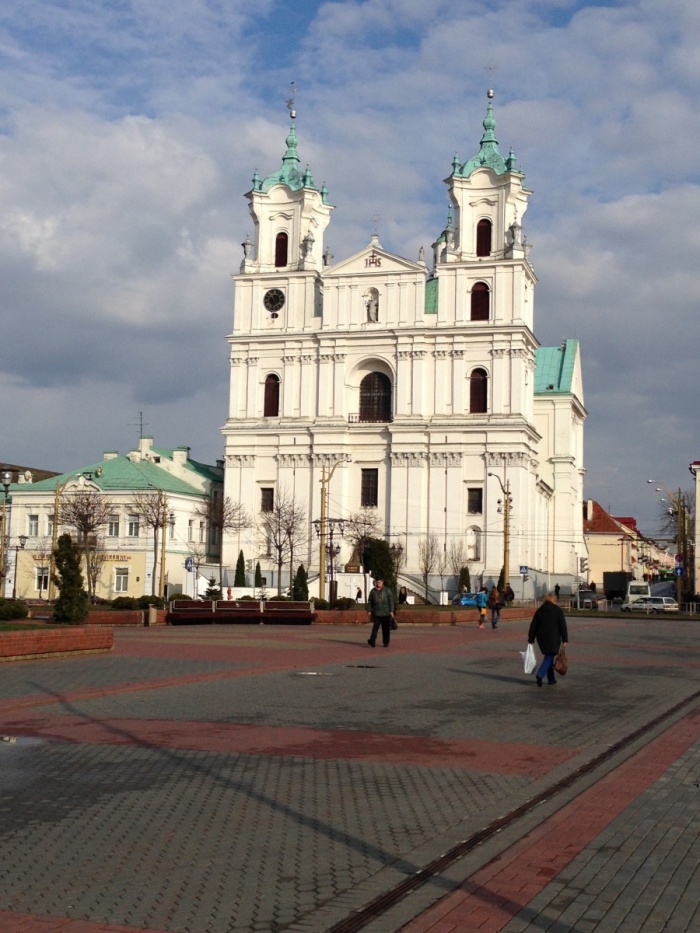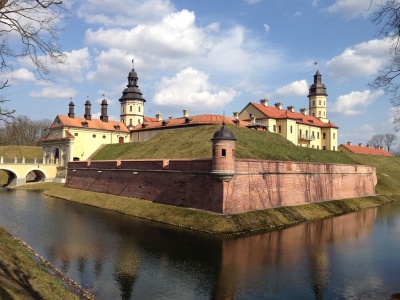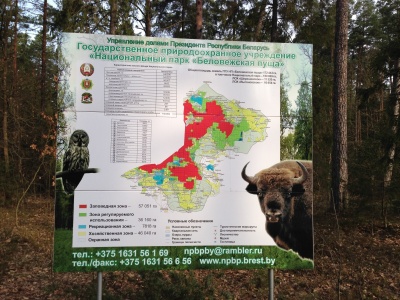Western Belarus: What To See and Do

Mir Castle. Photo credit: Nigel Roberts
For many first-time visitors to Belarus the limit of ambition and adventure often extends no further than the boundaries of inner city Minsk, yet a voyage of discovery exists elsewhere in the other major cities, museum towns and the natural world.
This article, the first of a two-parter, introduces a number of these treasures in the Western half of the country, where the elegance of Hrodna (also spelled Grodno), the frontier bustle of Brest, the palaces and castles of Mir, Niasviž and Navahrudak and the natural beauty of Bielaviežskaja Pušča National Park all await the curious traveller.
Cities: mediaeval and Soviet heritage
In strategic and geographical terms, Belarus played a number of important roles as the most Westerly of the former Soviet Union’s republics and it comes as no surprise that this feature continues to dominate its attractions today.
Nestling in the north-western corner lies the city of Hrodna. Just 20 kilometres from the Polish border and only 40 kilometres from Lithuania, its cultural and administrative importance within the former Grand Duchy of Lithuania and later in the time of the influential Polish-Lithuanian Commonwealth goes back over 750 years.
Catholic and Polish influences abound here, as most notably exhibited in the form of the majestic 17th century Jesuit Farny Cathedral, located centrally on Savieckaja Square. The exquisite high Baroque altars, one of which is 21 metres high, should not be missed.

Only a few hundred metres away, the frontage of the lovely Bernadino Church and Seminary high above the Nieman river affords fine views across the lower town, framing the unusual Drama Theatre, the Fire Tower and the Old and New Castles in the foreground.
Beyond and well worthy of a visit stands the Kaložskaya Church of St Barys and St Hlieb, the oldest remaining building in the city. Probably the only surviving example of the ancient style of Black Ruthenian architecture in the country, much of the original stonework of this lovely church dates from the 12th century.
Almost due south and 232 kilometres away in the south-western corner of the country lies the city of Brest. Situated on the pan-European E30 highway and the main Berlin to Moscow railway line, Hitler unleashed Operation Barbarossa here in 1941.
The 19th century fortress, one of the country’s major visitor sites, withstood a fearsome onslaught for six weeks. The title of Hero-fortress was bestowed after the Great Patriotic War to honour the heroism and self-sacrifice of the defenders during the early months of Barbarossa, the city itself also being honoured as “Hero City of the Soviet Union”.
Today, travellers with an interest in 20th century European affairs will find much in this somber and moving place to fire their imagination. And the Biarescie Archaeological Museum in the grounds of the fortress should not be overlooked.
Only a handful of kilometres from the European Union, this city has all the hustle and bustle of a true border town. Closer to Warsaw than to Minsk, Western cultural influences predominate.
Fairy-tale castles and palaces
160 kilometres due east of Hrodna on the M11 motorway lies the town of Lida with its mighty castle, boasting huge walls and a high level walkway connecting two of the imposing corner towers. Construction began in the middle of the 14th century. The site measures 80 metres square, making this one of the largest castle complexes in the country.
Similar to Lida in design and style, the 16th century Mir Castle and Fortress is one of the country’s UNESCO World Heritage Sites. Only 90 kilometres from Minsk, this sympathetically renovated fairy-tale castle of sublime décor and sumptuous exhibits easily repays the close attention of visitors.
Just half an hour away by road stands another UNESCO site, the historic settlement of Niasviž with its glorious palace. Surrounded by a charming lake and beautifully landscaped grounds, opportunities to promenade abound at this splendid site, one of the finest historical locations in the entire country.

A visit to ancient Navahradak, once the capital of the Grand Duchy of Lithuania, splendidly complements a visit to these castles and palaces. Around 45 minutes’ drive from Mir, the 14th century castle now lies in ruins, though renovations are under way.
Its location atop a hill 323 metres above sea level, one of the highest points in the country, dominates the town and the surrounding area, making it easy to appreciate its strategic value in times of medieval warfare.
The town also has a number of sites (including an interesting museum) devoted to the life and works of Adam Mickiewicz, national poet of Belarus, Poland and Lithuania, who was born here and christened in the church on the hill below the castle.
The beauty of nature
Only 70 kilometres north of Brest, the magnificent Bielaviežskaja Pušča State National Park and Biosphere Reserve, a third UNESCO World Heritage site, should be considered one of the country’s ‘must see’ sites. It came into existence as a park over 600 years ago, though its original status as a playground for Polish princes and Russian tsars has now far been exceeded. The first class Museum of Nature presents a fine guide to the history of the park as well as comprehensively describing current attractions, while tourist trails on foot, on horseback and by bicycle abound outdoors.

Several hundred European bison inhabit the park and eagle-eyed visitors should have no difficulty in securing a sighting from roads and paths. Another noteworthy resident, the ‘real’ Grandfather Frost also lives here. I have visited his dacha and was privileged to meet the grand old gentleman himself. He certainly convinced me of his credentials …
European Union visitors entering the park from Poland no longer require a Belarusian entry visa, although the process of applying for exemption presents no less a challenge than the visa application itself!
Four hotels await in and just outside the park, each with decent facilities for nourishment and relaxation. I have stayed at Hotel Number Three, just inside the park gates. Although a little shabby (dating as it does from the Soviet era), visitors to this place of peace and beauty will doubtless be seeking to return to the simplicities of life and nature. In that context, expect to find the rooms basic but clean. All have en-suite facilities.
I have one word of caution if visiting here though; do think carefully before stepping inside the Valeri animal enclosure. All of the animals and birds in this section of the park are caged. Many of them appear to exhibit distress and in particular, I found the sight of two brown bears in a state of considerable discomfort outside their natural environment particularly upsetting. Although the only negative experience in an otherwise delightful place, it remains a significant one.
Belarus has so much to offer beyond the attractions of its capital city. Those with an open and enquiring mind who step outside the boundary of the Minsk orbital road will not be disappointed by all they find there.
Nigel Roberts
Nigel is a freelance travel writer specialising in Belarus and is based in the UK.



 The new budget will prioritise financial support for police and army personnel.
The new budget will prioritise financial support for police and army personnel. The estates of noblemen of Hrodna region are sold off to investors.
The estates of noblemen of Hrodna region are sold off to investors.